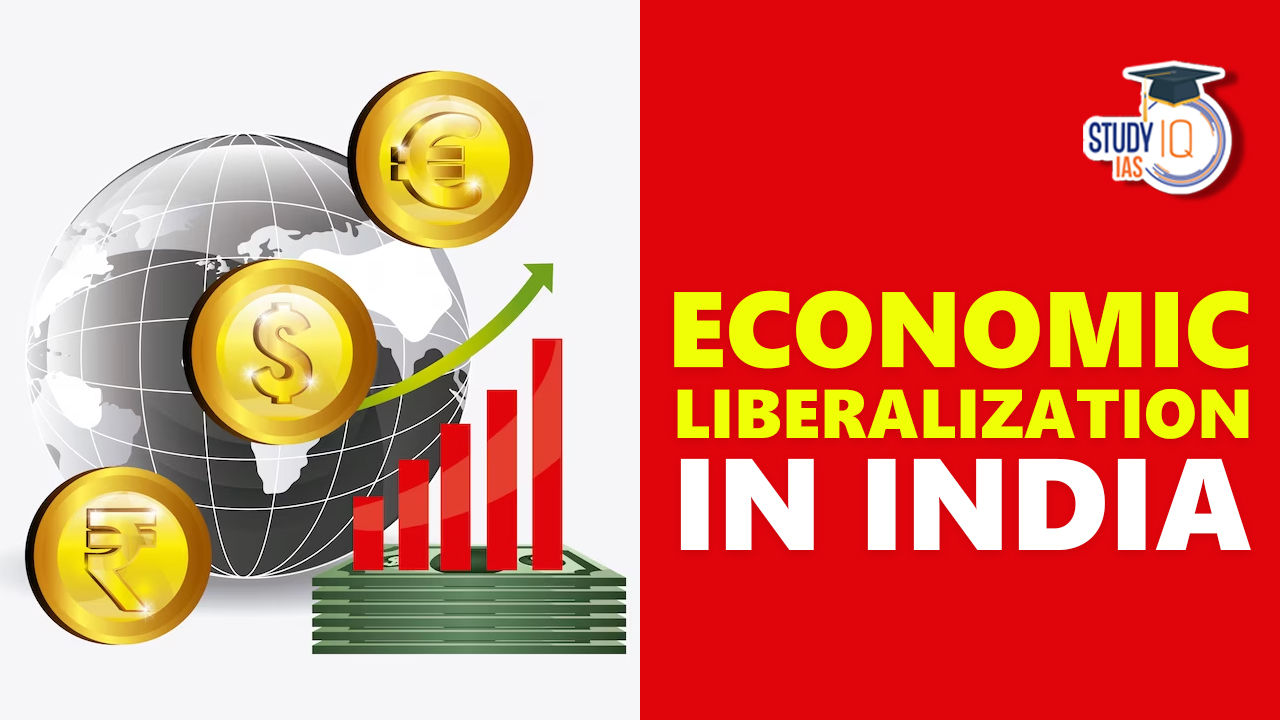Table of Contents
Economic Liberalization in India
In the history of India’s economic development, a significant turning point came with the initiation of Economic Liberalization. This transformative era marked a departure from the past and brought forth a series of reforms that aimed to reshape the country’s economic landscape. With the adoption of new policies and measures, India embarked on a journey towards openness, deregulation, and integration with the global economy. The era of Economic Liberalization in India set the stage for profound changes, stimulating growth, attracting investments, and unleashing the country’s entrepreneurial spirit.
Read about: LPG Reforms in India
Liberalization Concept
The concept of liberalization refers to the relaxation of government regulations and restrictions in various sectors of the economy. It involves reducing barriers to trade, promoting competition, encouraging private sector participation, and facilitating economic openness.
Liberalization aims to create a business-friendly environment, foster innovation, attract investments, and drive economic growth. Through liberalization, governments seek to enhance efficiency, productivity, and overall economic performance by allowing market forces to play a greater role in resource allocation and decision-making.
This approach often involves reforms in areas such as trade policies, investment regulations, financial sector liberalization, and deregulation of industries. Liberalization is seen as a means to stimulate economic activity, increase competitiveness, and integrate economies into the global marketplace.
Read about: FERA and FEMA
Economic Liberalization Examples
Economic liberalization has been implemented in various countries, and some notable examples include:
- India: In 1991, India initiated significant economic reforms to liberalize its economy. The reforms included relaxation of industrial licensing, reduction of trade barriers, deregulation of foreign investment, and opening up sectors such as telecommunications and aviation to private participation.
- China: China implemented economic liberalization policies in the late 1970s, known as the “Chinese economic reforms.” These reforms introduced elements of market-oriented reforms, liberalized trade, attracted foreign investment, and allowed private enterprises to flourish alongside state-owned enterprises.
- United Kingdom: The United Kingdom implemented economic liberalization measures in the 1980s under the leadership of Prime Minister Margaret Thatcher. These reforms included privatisation of state-owned enterprises, deregulation of financial markets, and reduction of trade union powers.
- New Zealand: In the 1980s and 1990s, New Zealand implemented a series of economic reforms known as “Rogernomics.” These reforms involved deregulation, reduction of trade barriers, privatisation of state-owned enterprises, and liberalization of financial markets.
- Singapore: Singapore is often cited as an example of successful economic liberalization. The country pursued a pro-business approach, attracting foreign investment, promoting free trade, and implementing policies that encourage entrepreneurship and innovation.
These examples demonstrate the diverse approaches and outcomes of economic liberalization in different countries, highlighting the potential for increased economic growth, market efficiency, and competitiveness.
Read about: Capital Account Convertibility
Economic Reforms in India Since 1991
Some of the significant economic reforms undertaken in India since 1991 are highlighted in this table. It must be noted that the table only includes the most important events.
| Reform Areas | Reforms Implemented |
| Industrial Policy |
|
| Trade and Foreign Investment |
|
| Fiscal Policy |
|
| Financial Sector |
|
| Agriculture and Rural Sector |
|
| Infrastructure Development |
|
| Labour Market Reforms |
|
Read about: NRI Deposits
Economic Liberalization in India UPSC
The topic of economic liberalization in India holds immense importance for the UPSC (Union Public Service Commission) examination as it aligns with the UPSC Syllabus, particularly in areas such as Indian Economy, Governance, and Current Affairs. Understanding the concepts, impact, and challenges associated with economic liberalization is crucial for UPSC aspirants, as it enables them to analyze policy reforms, evaluate economic implications, and assess the role of liberalization in India’s development trajectory. Aspirants can learn such concepts from UPSC Online Coaching platforms and undertake UPSC Mock Test to be confident for examination.
Read about: Concept of GDP, GNP, NNP and NDP


 Nilgiri Biosphere Reserve, Map, Climate,...
Nilgiri Biosphere Reserve, Map, Climate,...
 Repo Rate and Reverse Repo Rate, Impact ...
Repo Rate and Reverse Repo Rate, Impact ...
 Foreign Contribution Regulation Act (FCR...
Foreign Contribution Regulation Act (FCR...





















